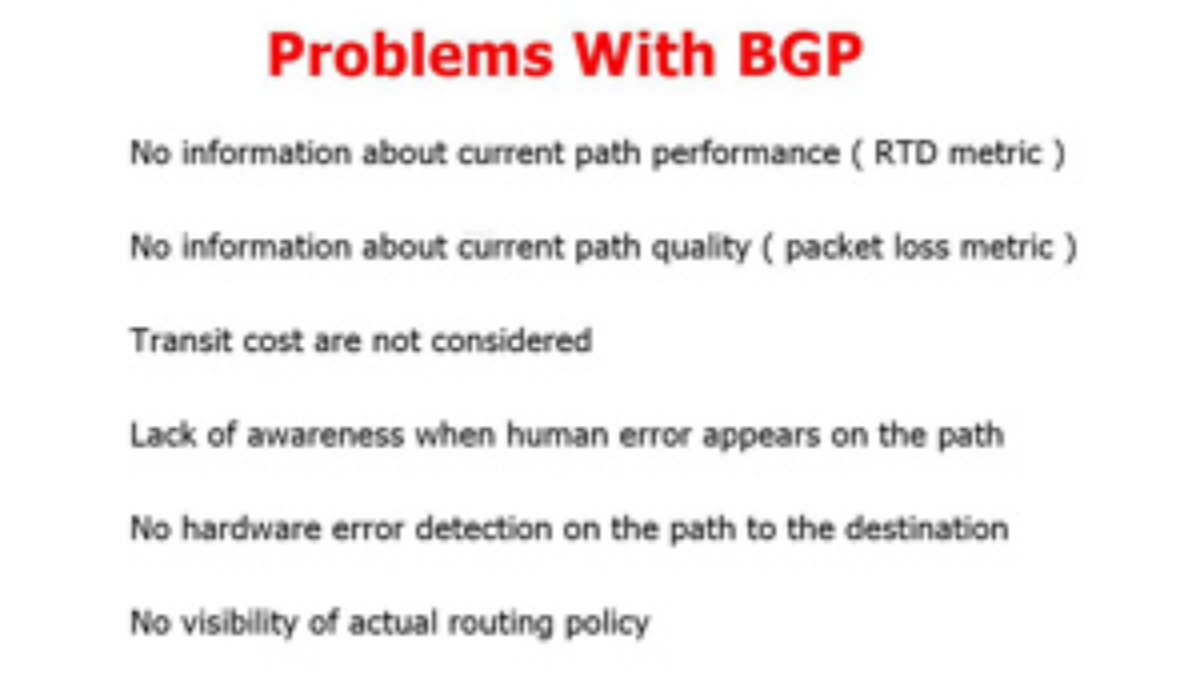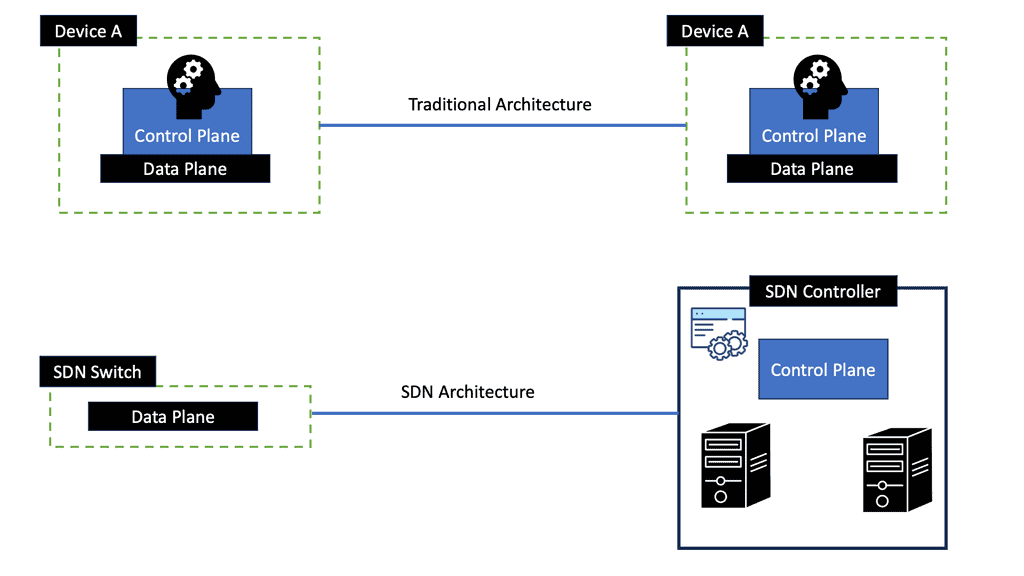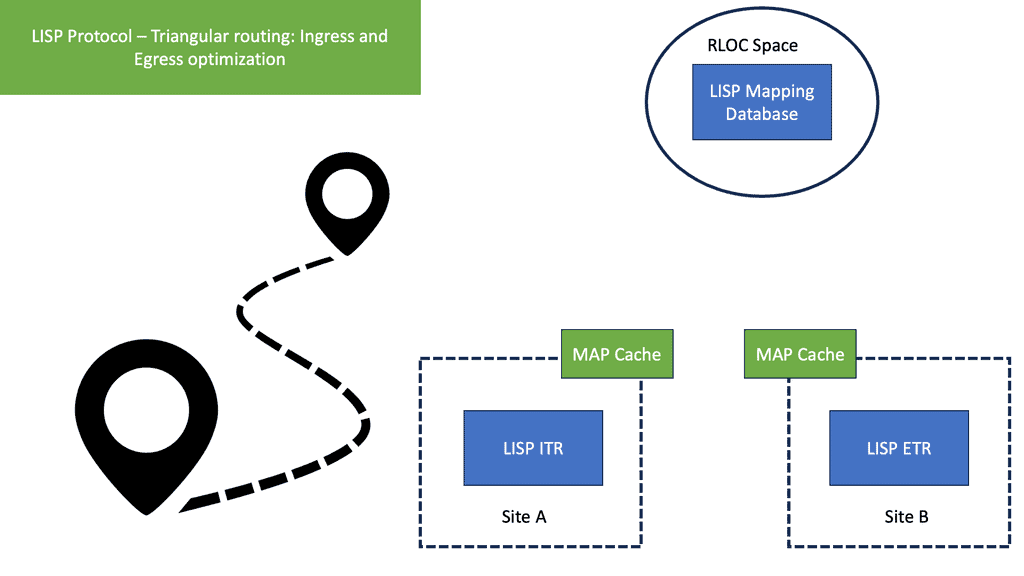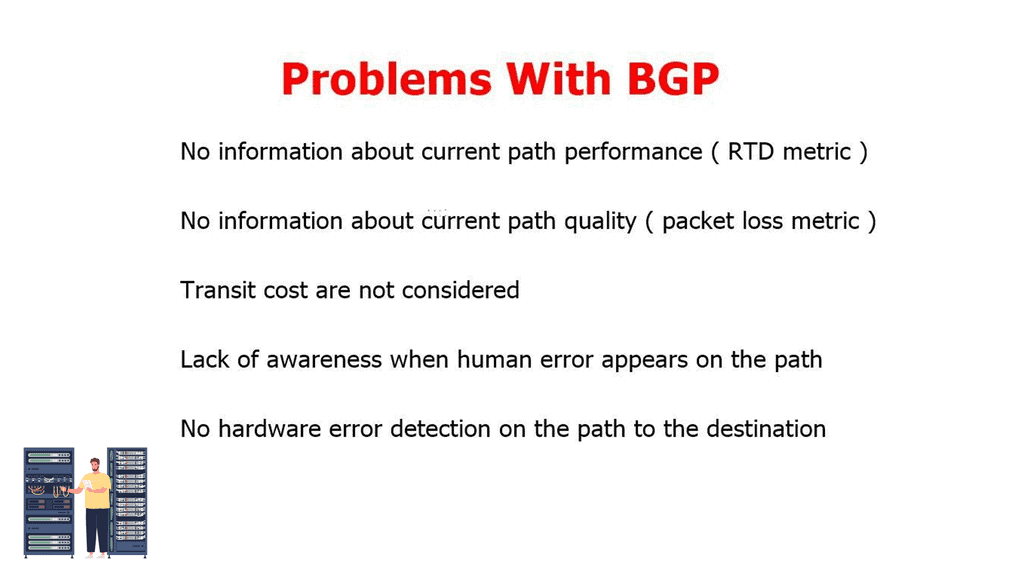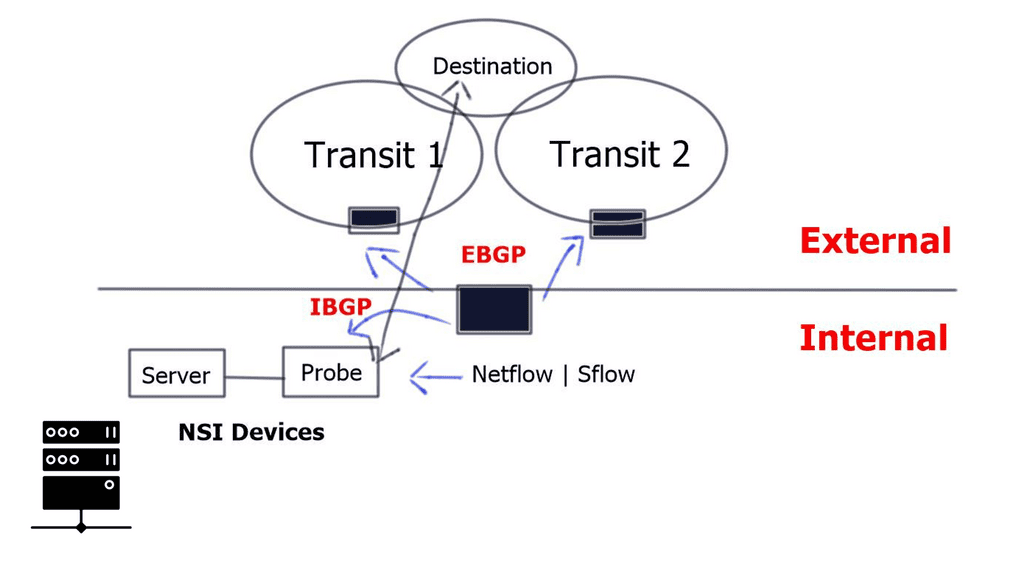SDN Traffic Optimizations
In today's rapidly evolving digital landscape, Software-Defined Networking (SDN) has emerged as a transformative technology. With its ability to centralize network control and dynamically allocate resources, SDN offers unprecedented flexibility and scalability. However, to fully harness its potential, optimizing SDN traffic becomes crucial. In this blog post, we will explore the key strategies and techniques for optimizing SDN traffic to enhance network performance.
SDN traffic patterns differ significantly from traditional networking approaches. By decoupling the control plane from the data plane, SDN introduces new traffic dynamics. Understanding these patterns is vital for effective optimization. We will delve into various types of SDN traffic and their characteristics, including control traffic, data traffic, and management traffic.
Traffic Engineering in SDN: Traffic engineering plays a pivotal role in SDN optimization. It involves intelligently managing network resources to ensure efficient traffic flow. We will explore techniques such as path selection algorithms, traffic splitting, and load balancing to optimize SDN traffic. Additionally, we will discuss the concept of quality of service (QoS) and its relevance in optimizing traffic for different applications.
Flow Table Management and Optimization: The flow table is a central component of SDN switches, governing how traffic is processed and forwarded. Optimizing flow table entries is crucial for minimizing latency and maximizing throughput. We will discuss strategies for efficient flow table management, including flow prioritization, wildcard rules, and flow table size optimization.
Bandwidth Allocation and Resource Utilization: Effective allocation of available bandwidth is vital for optimizing SDN traffic. We will explore techniques such as bandwidth reservation, traffic shaping, and admission control to ensure optimal resource utilization. Additionally, we will delve into the importance of monitoring and analyzing network traffic to identify potential bottlenecks and optimize bandwidth allocation.
Conclusion: Optimizing SDN traffic is a critical aspect of enhancing network performance. By understanding SDN traffic patterns, implementing traffic engineering strategies, optimizing flow table management, and efficiently allocating bandwidth, organizations can unlock the full potential of SDN. As the demand for high-performance networks continues to grow, mastering these optimization techniques becomes essential for network administrators and engineers.
Matt Conran
Highlights: SDN Traffic Optimizations
Challenges to Network Management
Because legacy networks have static and inflexible architectures, they are not equipped to cope with today’s increasingly dynamic networking trends or meet modern users’ quality of experience requirements. Therefore, it is necessary to enforce complex, high-level policies to adapt to current networking environments and to automate network operations to reduce the tedious workload of low-level device configuration.
To avoid misconfigurations and ease network management, operators considered running dynamic scripts to automate network configuration settings before realizing their limitations. Recent approaches to scripting configurations and automating networks (e.g., Ansible) are becoming more relevant, however.
SDN Applications
SDN allows applications to express their goals and policies directly in a centralized, high-level manner without being tied to the details of implementation and state distribution of the underlying networking infrastructure by decoupling the application logic from the network hardware and logically centralizing the network control. Likewise, SDN applications consume the network services and functions the control plane provides via the northbound interface, according to their specific needs.
Thus, the northbound API provided by SDN controllers facilitates network programmability, simplifies control and management tasks, and facilitates innovation by allowing network abstraction. A standard does not support the northbound API, unlike the southbound API.
Challenges to Multihoming
Multihoming to different transit providers has become an essential service component at the Internet edge. Multihoming allows you to satisfy several high-level requirements, including redundancy. Redundancy is site or device/link level and protects from a single point of failure.
There are several ways to route and manage traffic in and out of multi-homed sites. Some rely on static routing, while others rely on the routing policy capabilities of the inter-domain routing protocol, Border Gateway Protocol (BGP).
Cisco’s LISP
Cisco Locator/ID Separation Protocol (LISP) was developed to deal with the rapid growth of the default-free zone (DFZ) or Internet routing table. To address routing scalability problems on the Internet, LISP was created as a routing architecture and a data plane protocol:
It is part of the Internet routing table’s size and growth that many routes are provider-independent and non-aggregable.
Internet routing table aggregation/scalability problems are exacerbated by traffic engineering, in which more specific routes are injected into the Internet.
Multihoming is impossible without a full Internet routing table (900,000+ IPv4 routes at the time of writing); for small sites requiring multihoming, a powerful router is needed to handle the entire routing table (large memory, powerful CPUs, more TCAM, more power, coolers, etc.), which can be prohibitively expensive.
Instability in Internet routes (route churn) consumes vast amounts of CPU and memory, requiring powerful routers to cope.
You may find the following helpful post for pre-information:
Inbound Traffic Optimization Key SDN Traffic Optimizations Discussion Points: |
|
Back to basics with BGP
Border Gateway Protocol (BGP) is the routing protocol to exchange routing information across the Internet. BGP is considered the glue of the Internet and is the only protocol designed to deal with a network of the Internet’s size. As a result, BGP is sometimes called a distance-path protocol.
BGP does not look at something as simple as hop count or link costs, but it doesn’t keep track of the complete topology of the entire network either. Instead, BGP accomplishes this through neighbor-peer relationships that must be explicitly configured.
Lab guide on BGP
Here, we have a sample BGP network consisting of two nodes, BGP Peer 1 and BGP Peer 2. We are running iBGP between these BGP peers, which is done by configuring both peers with the same AS number, in our case, AS 1. The command show ip bgp summary is used to determine the status of a BGP neighbor. Remember that BGP runs over TCP port 179 and is a path vector protocol.
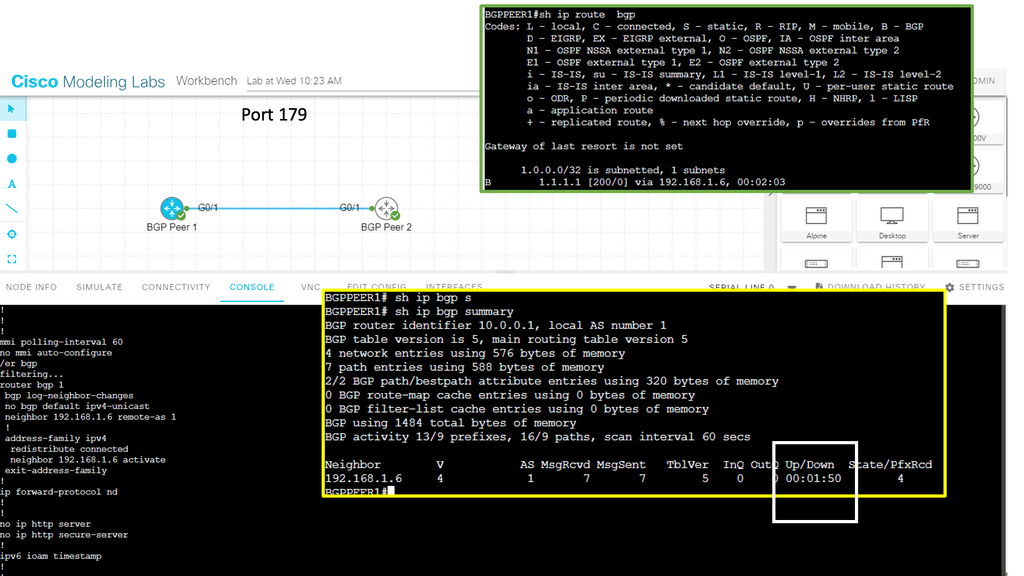
BGP Inbound Traffic Engineering
BGP is great for reducing network complexity and increasing scale at edges, but it has shortcomings concerning path selection. BGP is scalable and robust, but routing decisions based on BGP attributes are flawed. These are driving a requirement for a new approach, SDN traffic optimizations, and triangular routing with the LISP control plane.
For BGP inbound traffic engineering, the protocol validates path attributes. It selects the best path by checking local preference, shortest AS Path, ORIGIN attribute, lower MED attribute, eBGP routes are preferred over iBGP routes, and lower metric to the NEXT-HOP. Although these attributes allow granular policy control, they do not cover aspects relating to path performance. So, how can you add intelligence to BGP?
Traffic Engineering with SDN:
SDN enables administrators to implement advanced traffic engineering techniques to optimize network traffic. By leveraging real-time network analytics and traffic monitoring, SDN controllers can intelligently route traffic based on various parameters such as bandwidth, latency requirements, and network congestion. This dynamic traffic engineering ensures network resources are efficiently utilized, reducing bottlenecks and improving overall network performance.
Quality of Service (QoS) Optimization:
One of the key benefits of SDN is its ability to prioritize certain types of network traffic over others. With SDN, administrators can implement Quality of Service (QoS) policies to ensure critical applications and services receive the necessary bandwidth and low latency they require. By prioritizing traffic based on predefined rules, SDN can guarantee a consistent user experience for essential services while preventing network congestion caused by non-critical traffic.
Scalability and Flexibility:
Traditional networking architectures often struggle to scale efficiently, leading to performance degradation as network demand increases. SDN offers inherent scalability by decoupling network control from the underlying hardware. With SDN, administrators can quickly scale network resources and adapt to changing traffic patterns by dynamically provisioning resources and adjusting traffic flow without requiring manual configuration changes.
Network Virtualization:
SDN provides the foundation for network virtualization, allowing administrators to create virtual networks independent of the underlying physical infrastructure. This virtualization enables the efficient allocation of network resources, isolation of traffic, and simplified network management. By leveraging network virtualization, organizations can optimize their network traffic by creating logical networks that meet specific requirements, such as separating traffic for different departments or applications.
SDN Traffic Optimizations and Border 6
Border6’s goal is simple: to develop an innovative routing optimization platform. Their toolset (NSI probe and NSI server) is not a replacement for BGP but a complementary tool. BGP is still required at network edges. The NSI products integrate with the border-routing process to complement the BGP decision process.
Integrating NSI into BGP adds additional intelligence to the BGP routing process and overcomes the issues addressed with BGP inbound traffic engineering. It allows engineers to automate, control, and monitor routing policies. For example, it has a Routing Decision Engine ( RDE ) that looks at the cost of transits. It takes into account the monthly subscription cost and the cost of traffic bursts.
Inbound traffic optimization
NSI probing and analysis allow them to measure latency and packet loss. The best path is then compared to the original path selected by the BGP process. The entire process lets you compare paths in terms of performance. If BGP does not determine the best path, NSI automates traffic engineering and pushes outbound traffic via the best-performing path.
The NSI probe communicates with the BGP edge routers and sends aggregated data back to the NSI Server. The server then analyzes the data and triggers an action for the NSI probe. You can have multiple NSI probes for various data center topologies at each location.
Optimizing inbound traffic flow
Enforcing outbound routing is performed without any difficulty. Inbound routing differs as you rely on the upstream 3rd party to take action. You can, however, influence this with AS-PATH prepending, community tagging, and auto-shutdown of defective links. Locator/ID Separation Protocol (LISP) provides more granularity for inbound traffic engineering as it separates the address spaces.
Border 6 supports LISP version 1.1 and can respond to the path available to external servers to reach a preferred network. This is based on NSI measurements. Border 6 is collaborating with the French Research Agency ( ANR ) to develop a design to integrate NSI with LISP for inbound traffic optimization. This is an ongoing project and is dependent on the broader scope of a global LISP implementation. And as Mateusz Viste states – “LISP is not going to rule the Internet tomorrow, nor the day after that.“
Border 6 LISP process
The NSI device registers itself with a MAP server. A LISP Map server is a LISP infrastructure device that advertises host prefixes that are advertising to it. The registration process involves sending the customer’s prefix to the MAP server. When other LISP participants need to send a packet to the customer’s prefix, they query the MAP server for its location. The MAP server, in turn, relays it to the NSI device.
NSI identifies who is asking (what remote prefix), and responds with the correct RLOC device. RLOCs identify the location of the prefix. The selection of RLOC is based on where transit gateway Border 6 prefers. This requires LISP tunnels on every customer’s edge routers, making it possible for external entities to send LISP-tunneled packets. Until LISP becomes widely available, Border6 continues other working practices to optimize inbound traffic flows, shortest AS-Path, community tagging, and auto-shutdown of defective links.
Other Inbound Optimizations
Standard AS-PATH prepending is a well-known BGP path engineering method. BGP selects paths with the shortest AS path. Setting multiple AS entries to a prefix, announced to each of your transits, will affect inbound traffic flow. Community tagging – is a “work-in-progress” project due this year. Essentially, they can add custom-defined communities to the selected prefix.
Transit providers can match these communities and partially re-announce them. Effectively, this is traffic engineering for inbound flow. Auto-shutdown of defective links—when NSI detects a failure on one of your transit, it can shut down the BGP session (via SSH access on your router), preventing announcements of your prefix via particular links.
NSI route limiter
RAM and CPU are critical components of router resources and should always be protected. Routers at the edge may need to accept large portions of the BGP table, maybe the entire BGP table, consuming many router resources. The global IPv4 routing table has surpassed the 500 thousand route benchmark. We are quickly reaching the hard forwarding capacity limits of many popular routers. NSI has a nice feature known as a route limiter.
It is used for routers that can not accept large BGP tables due to memory or other constraints. NSI can feed low-end customer edge routers routes that NSI selects to match destinations where you send traffic. This frees up RAM and CPU for additional control and data plane tasks. It also lets you use cheaper Layer 3 switches, such as Cumulus or Brocade. Make your WAN edge and BGP platform a proper BGP SDN-powered solution.
Software-defined networking (SDN) has revolutionized network traffic optimization by giving administrators unprecedented control and flexibility. With its centralized control, dynamic traffic engineering capabilities, and ability to prioritize critical traffic, SDN enables organizations to improve network performance, reduce congestion, and enhance the overall user experience. As the demand for data continues to grow, SDN will play a crucial role in ensuring efficient network traffic management in the digital era.
Summary: SDN Traffic Optimizations
In today’s rapidly evolving digital landscape, efficient network traffic management is crucial for businesses to stay competitive. Software-defined networking (SDN) is a game-changing technology that revolutionizes how networks are designed, operated, and optimized. In this blog post, we explored the world of SDN traffic optimizations, uncovering its benefits and highlighting practical strategies for maximizing network performance.
Understanding SDN Traffic Optimizations
SDN traffic optimizations involve leveraging the programmability and flexibility of SDN architectures to enhance network efficiency. By separating the control plane from the data plane, SDN empowers network administrators to manage dynamically and direct traffic flows, making it possible to prioritize critical applications, balance loads, and enforce quality of service (QoS) policies. This newfound agility and control allow businesses unprecedented opportunities to optimize their network performance.
Key Strategies for SDN Traffic Optimizations
Traffic Engineering: SDN enables intelligent traffic engineering by allowing administrators to define traffic paths based on real-time conditions. Through centralized control and programmability, traffic can be dynamically routed, avoiding congestion points and taking advantage of available resources. This results in optimized network utilization and improved end-user experience.
QoS Enforcement: Prioritizing traffic based on application requirements ensures optimal performance. SDN traffic optimizations allow for granular QoS enforcement, enabling administrators to allocate bandwidth, manage latency, and control packet loss. This level of control ensures that critical applications receive the necessary resources, guaranteeing a consistent and reliable user experience.
Load Balancing: SDN makes load balancing more intelligent and efficient. By monitoring network conditions in real time, SDN controllers can distribute traffic across multiple paths, avoiding bottlenecks and optimizing resource utilization. Load balancing algorithms can be tailored to specific network requirements, ensuring that traffic is evenly distributed and maximizing overall network performance.
Case Studies: Real-World Examples of SDN Traffic Optimizations
Healthcare Sector: With the increasing reliance on digital healthcare systems, SDN traffic optimizations have proven invaluable in ensuring the seamless delivery of critical patient data. By prioritizing traffic flows, healthcare providers can guarantee timely access to medical records, reduce latency in telemedicine applications, and enhance overall network performance.
Enterprise Data Centers: Large-scale data centers face significant challenges in managing complex traffic patterns. SDN traffic optimizations offer a scalable and efficient solution by dynamically routing traffic based on real-time conditions. This reduces congestion, improves application response times, and enhances overall data center performance.
Conclusion:
SDN traffic optimizations have emerged as a transformative technology, empowering businesses to take control of their networks like never before. By leveraging the programmability and flexibility of SDN architectures, organizations can optimize network performance, improve user experience, and gain a competitive edge in today’s digital landscape. Embracing SDN traffic optimizations is a strategic investment that unlocks the true potential of network infrastructure.

